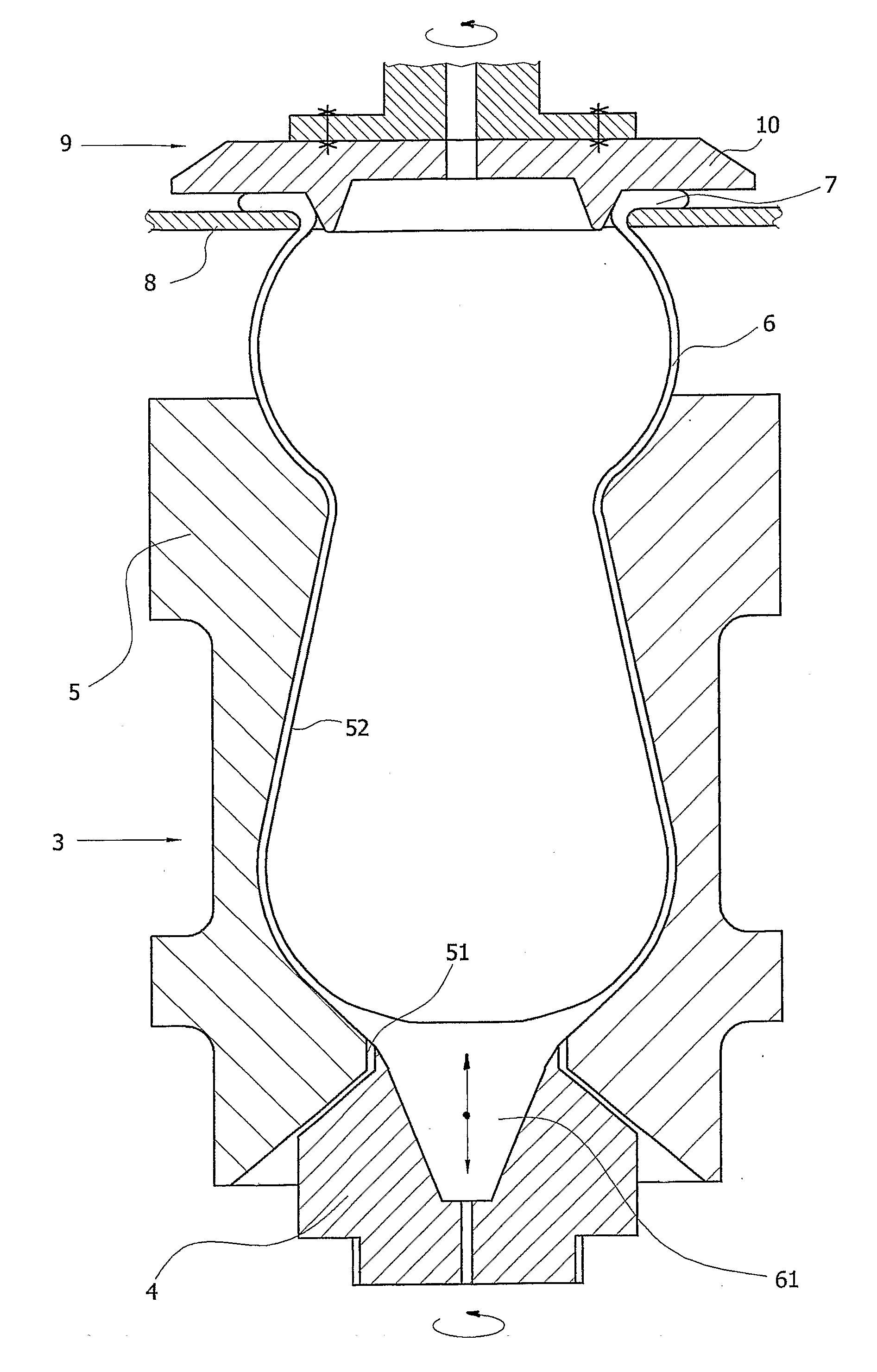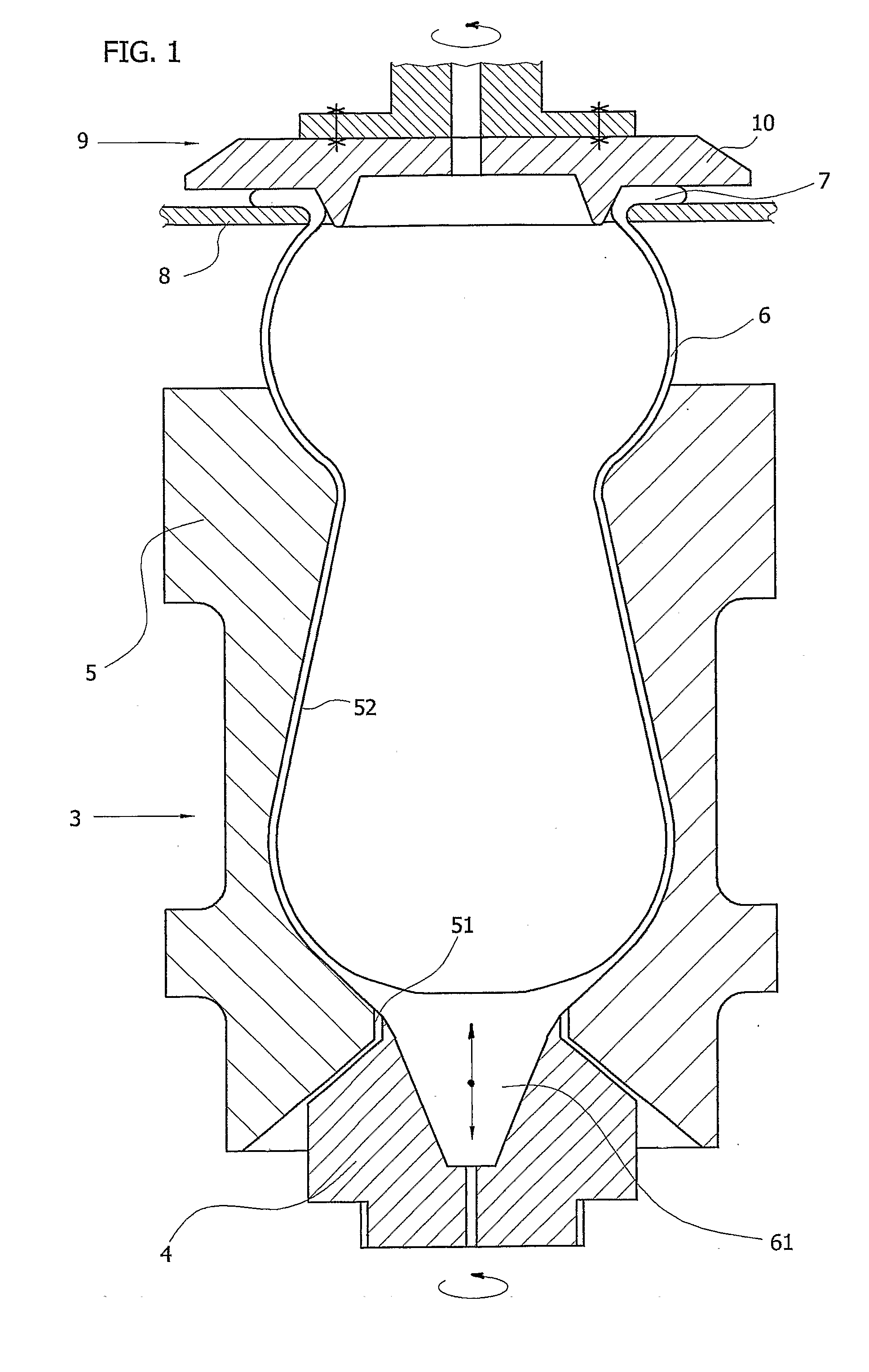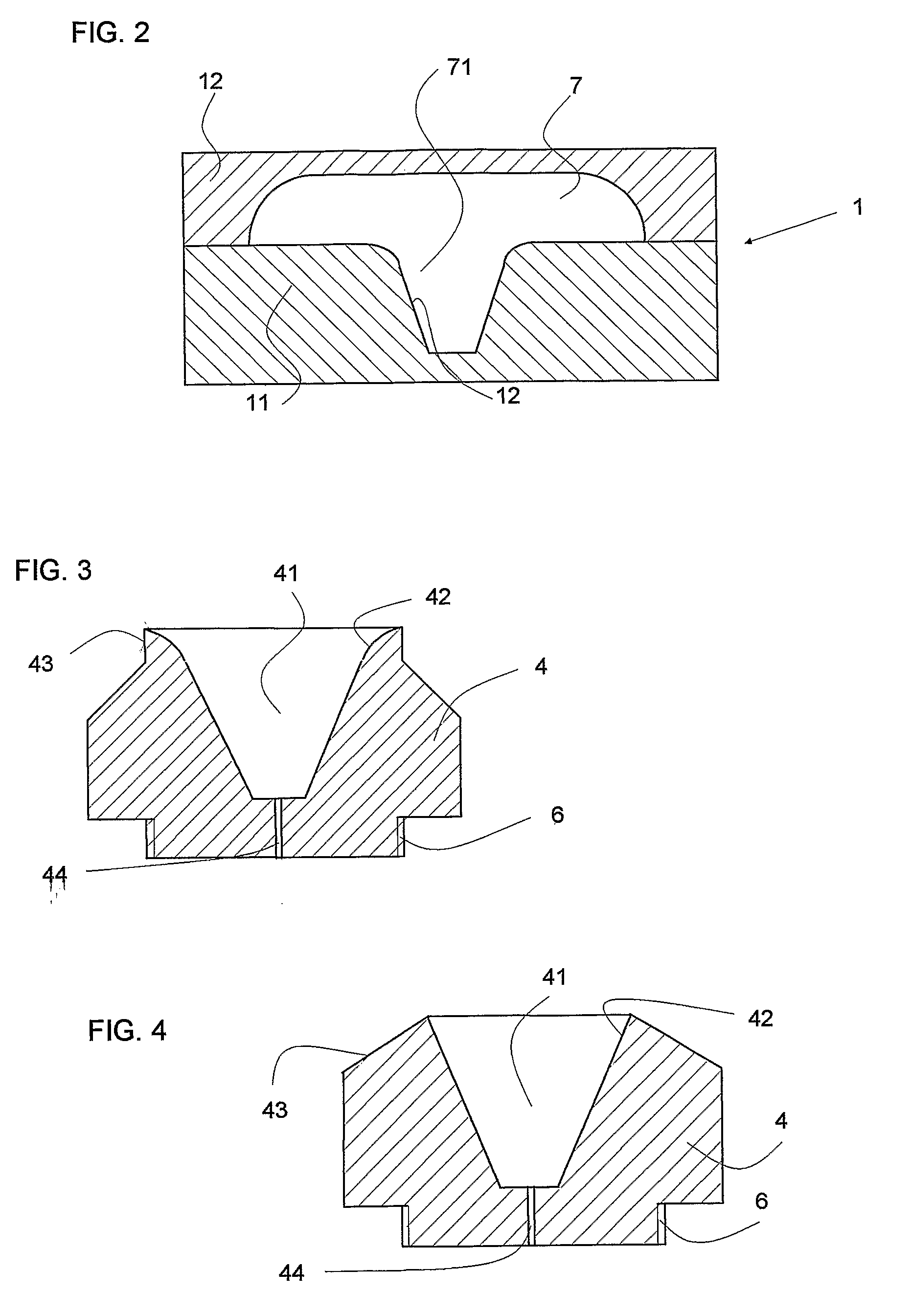Method of Manufacture of Glass Flasks with Stem and Apparatus for Performing of this Method
a manufacturing method and glass flask technology, applied in glass blowing apparatus, glass making apparatus, glass shaping apparatus, etc., can solve the problems of high internal stress, high internal stress, and high internal stress on the welding spot, and achieve the effect of increasing the competitive strength of glass household products and less operation costs
- Summary
- Abstract
- Description
- Claims
- Application Information
AI Technical Summary
Benefits of technology
Problems solved by technology
Method used
Image
Examples
Embodiment Construction
[0014]On the (non-demonstrated) body of the rotary glass-blowing machine, the parison mould 1, made by the fixed bottom die 11 and the movable punch 12, out of the motion path of blowing stations 3 is arranged. The die 11 of the parison mould 1 of the automatic glass-blowing machine is fitted with the recess 13, the volume of which is the same as the stem volume of the particularly manufactured glass flask and each blowing station 3 of the automatic glass-blowing machine is fitted with the bottom mould 4 arranged rotary and movable in the vertical direction, its cavity 41 having both shape and volume the same as both the shape and volume of the recess 13 of the bottom die 11, the cavity 41 of the bottom mould 4 being fitted with the orifice 42, the outer rotary surface 43 of which having the diameter smaller than the diameter of the inner rotary surface 51 of the bottom orifice 51 of the glass-blowing mould 5 and being parallel with the inner rotary surface 51 of the bottom opening ...
PUM
| Property | Measurement | Unit |
|---|---|---|
| gravity | aaaaa | aaaaa |
| diameter | aaaaa | aaaaa |
| temperature | aaaaa | aaaaa |
Abstract
Description
Claims
Application Information
 Login to View More
Login to View More - R&D
- Intellectual Property
- Life Sciences
- Materials
- Tech Scout
- Unparalleled Data Quality
- Higher Quality Content
- 60% Fewer Hallucinations
Browse by: Latest US Patents, China's latest patents, Technical Efficacy Thesaurus, Application Domain, Technology Topic, Popular Technical Reports.
© 2025 PatSnap. All rights reserved.Legal|Privacy policy|Modern Slavery Act Transparency Statement|Sitemap|About US| Contact US: help@patsnap.com



